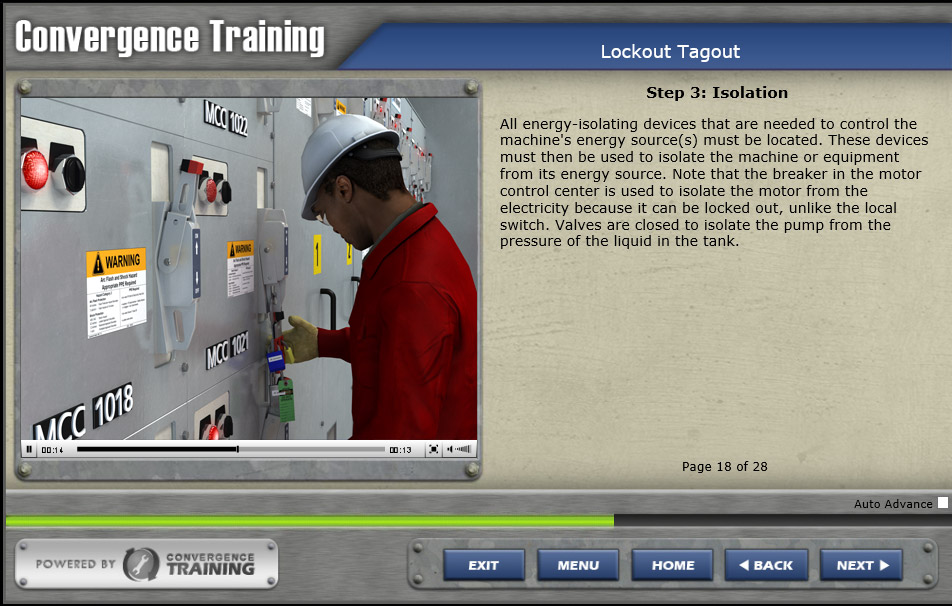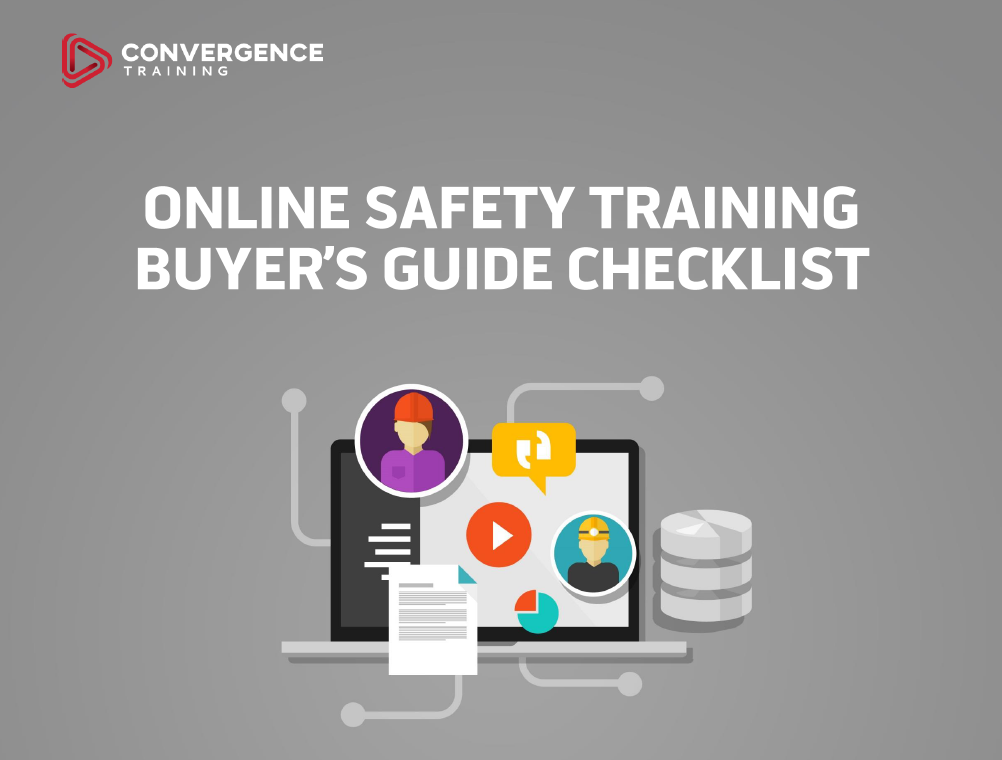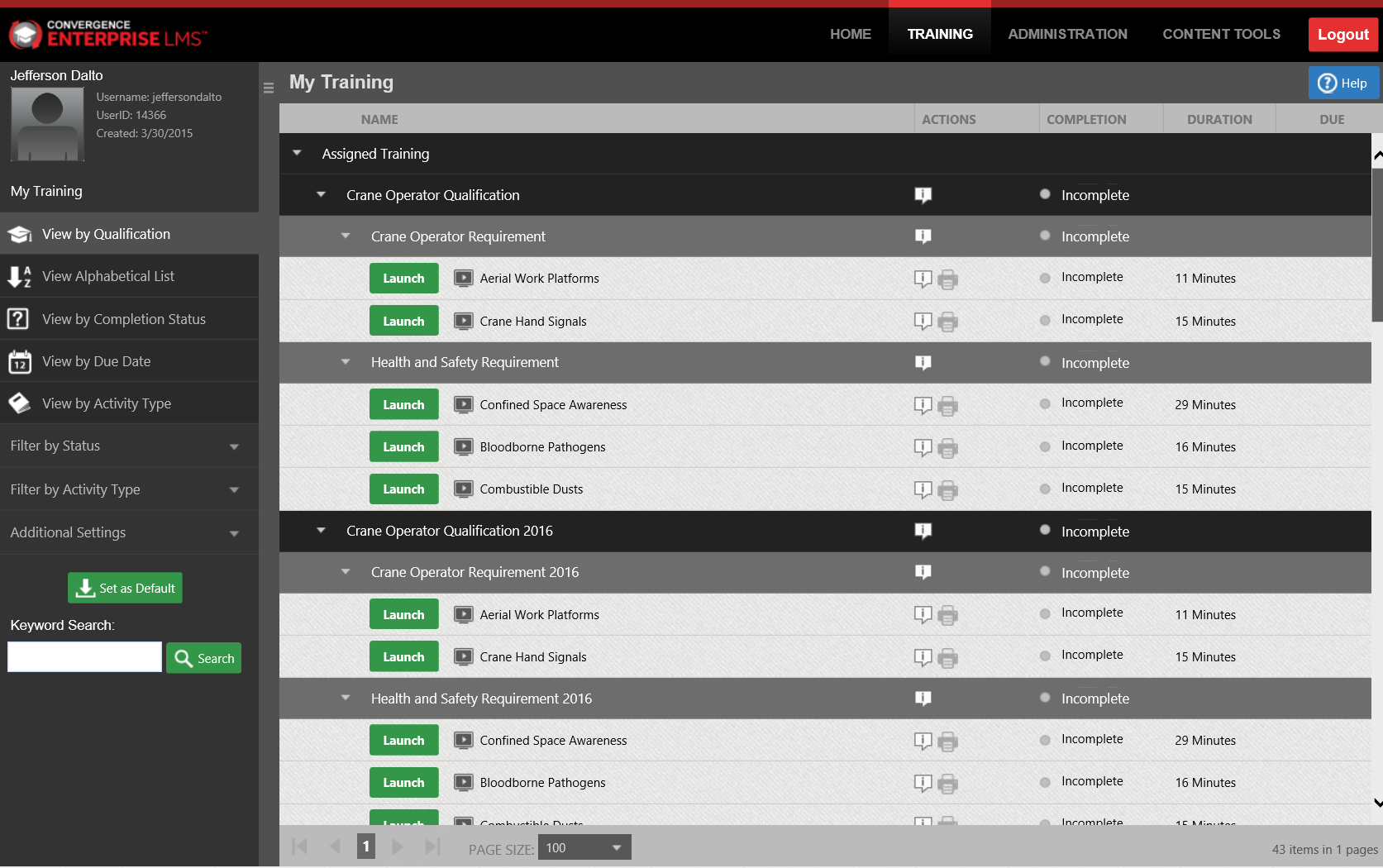
A lot of people think that instructor-led training is ALWAYS better than e-learning, also known as online training.
And, based on our experience, it seems that this opinion is held especially strongly among safety professionals.
But, the truth is, there are often scenarios where elearning is as effective (and at times possibly more so) than instructor-led training. In this post we’re gonna take this topic head on, and give some examples when elearning is the most appropriate training method to use.
- Learning Management Systems
- Online Safety and Health Training Courses
- Incident Management Software
- Mobile Safety Training Apps
eLearning and Instructor-Led Training: What the Research Says
Before we drill down into the specifics below, let’s begin by seeing what the experts and what the research shows.
Dr. Will Thalheimer is a globally recognized learning professional and researcher, and he’s analyzed metastudies on the effectiveness of different types of learning, including eLearning and instructor-led training (ILT).
In his research findings, titled Does eLearning Work? What the Research Says!, Thalheimer finds that eLearning can be equally effective and in fact is more often than not more effective than instructor-led training. Here’s what he says in the report:
Overall, these meta-analyses found that eLearning tends to outperform classroom instruction…
To learn more about his findings and to dig deeper into his explanations, we encourage you to read the whole report. Or you can read the interview we had with Dr. Thalheimer on the topic, in which he explains the findings of his research on eLearning effectiveness (quick hint: research shows that you get even better results by using both eLearning and instructor-led training in a blended learning solution).
And by the way, Dr. Thalheimer’s findings about the effectiveness of eLearning duplicate findings from a US Department of Education report on eLearning effectiveness, titled Evaluation of Evidence-Based Practices in eLearning, as well.
Is eLearning Always Better for Safety Training?
The short answer is-no.
Despite all the deeply held opinions out there, studies, data, and evidence show that the training media (eLearning, instructor-led, etc.) doesn’t affect the effectiveness of the training. That’s the main conclusion in Dr. Thalheimer’s research findings, mentioned above.
But that’s when all things are equal. Meaning, when all the training materials and methods are included in each training media (eLearning, instructor-led, etc.). But that rarely happens.
Can you build an eLearning course that provides a fantastic, life-like simulation of performing a task in the real world? Yep. Does it happen all the time? Nope. And can you build an eLearning course that provides fantastic feedback to the questions asked and skills performed by workers? Yep. Does it happen all the time? Nope.
And on the flip side, can you have an instructor who has access to technically sophisticated visuals that help people understand abstract, difficult, or “hidden” concepts? Yep. Does it happen all the time? Nope. And can you have an instructor who evaluates the assessment of hundreds of workers who attended a training to determine their comprehension and assigns necessary re-training for those who don’t “get it?” Yep. Does it happen all the time? Nope.
So while eLearning isn’t always better, there are plenty of times when it is. And that’s what we’ll look at here.
When eLearning Courses Are Better for Safety Training: 9 Cases
So let’s get to the meat of the matter here: cases in which eLearning courses are a better way to train workers on EHS topics than instructor-led training is.
1. With concepts that are abstract, difficult to visualize, and/or impossible to see
Some concepts are difficult to explain in a purely verbal manner, such as instructor-led training. These can include abstract concepts, such as the molecular composition of a gas, or things that are difficult or impossible to see, such as a how the inside of a machine operates.
eLearning, on the other hand, with its use of video, animations, photos, and other images, all synced with explanatory audio, excels at conveying this type of information.
By way of an example, check out this sample e-learning course about sling angles.
For more on this topic, see our 10 Amazing Ways Animations Make Safety Training More Effective article.
2. Training a remote workforce
Many safety managers have to provide training to workers at more than one site. Or maybe to employees who work remotely, or at widespread customer locations throughout a region, nation, or across the globe.
In some cases, it’s impossible to train (or fully train) a work force like this with instructor-led training. And so people go untrained, incidents occur unnecessarily, people get hurt or killed, safety-related costs go up, regulators deliver citations and fines, and so on.
In other cases, it IS possible to deliver the training to this workforce with just instructor-led training, but it includes a lot of logistical and clerical headaches and a lot of extra costs. Who organizes the group training session? Who buys the plane tickets and hotel rooms? How much time does this all take? What is the cost of all that time in dollars? Who pays for the hotel rooms and the cost of the training room itself? What about meals and refreshments? What about overtime for the workers attending a training session on an evening or weekend? Or the opportunity cost of having this extended training occur on a normal work day, and not having your workers work?
In situations like this, eLearning courses delivered over the Internet can be a great help. People can log in when their schedule allows and complete the training on their own. The clerical and logistic hassles of coordinating and booking travel are gone, as are the costs for travel and overtime pay.
3. Training workers on multiple shifts
Even if all the workers you need to train work at the same site, they often work on different shifts.
This creates many of the same scheduling, logistics, and clerical hassles that having workers at multiple locations does. And it leads to many of the same expenses as well when trying to use instructor-led training in all cases.
Instead, using an eLearning course delivered through a learning management system (LMS) makes it easy for you to deliver some of those training messages online. Workers on all shifts can access them during their normal work hours. You don’t have to train multiple instructors to lead train workers on multiple shifts.
Win/win, no?
4. Simple company policies
Many times, instructors gather workers in a room for a training session (or several training sessions, with different people attending to hear the same information at different times) to be informed of something very simple. For example, a new company policy or a change to an existing company policy.
Usually, there’s no good reason to bring people together into a classroom setting to deliver this kind of training. It’s just that there’s often no other way to deliver the information or to get a signature from the worker that he/she is aware of the new policy.
eLearning courses provide a much simpler, easier way to deliver the same information. Put the information in an eLearning course you created (see how to build your own eLearning course), assign it to your workers, let them watch or read the materials when their schedule allows, and let the LMS record that they have seen the new policy.
5. Very basic information
This example is similar to the last. Just as you don’t have to go to the expense of pulling workers together to explain a simple new policy, you also don’t have to use instructor-led training for very basic information that doesn’t require hands-on practice, supervision, real-time verbal feedback, and/or extensive Q&A.
For example, a lot of material in a Slips, Trips, and Falls course can be handled with eLearning just as effectively or more effective than with instructor-led training, and done so at a lower cost. Why not save that instructor-led training time and budget for times when you really need it?
6. Situations in which automated testing/scoring is important
In some cases, it’s important to be able to test your employees, score those tests, determine who passed and failed those tests, and keep records of those tests.
You CAN do this with instructor-led training, but doing so takes a lot of time. You’ve got to hand out paper-based tests, score the tests individually when workers are done, store all your records of the tests, and later be able to retrieve those records.
On the other hand, e-learning automates all this for you. Tests are automatically delivered to workers online. Your LMS scores the tests and determines who passes and who fails (based on a pre-determined passing score). The LMS also stores records of these tests indefinitely, and provides a reporting suite that makes it easy to retrieve this information in a matter of seconds–even if the test was taken years ago, or even if you’re retrieving tests data for workers at multiple sites.

Automated testing with e-learning and an LMS is an efficient way to evaluate comprehension of information.
7. When delivering a standard, consistent training message is essential
It’s generally important in all cases that the same, consistent training message be delivered to all workers.
But in some cases, it’s not just important, it’s critical.
And even though instructor-led training can be great, one potential downside is that the instructor may veer from the desired message or not communicate the desired message as intended. Or maybe they just don’t communicate it effectively.
This can happen for a number of reasons. Maybe the instructor simply forgot to say something. Or maybe one instructor misunderstands something that other instructors understand correctly. Or, maybe the instructor disagrees with part of the intended training message and goes a “bit rogue” on a point or two.
You can avoid this with e-learning courses. In an e-learning course, the message is the same every time, to every employee, on every shift, at every site.
Until you don’t want it to be, that is. Your LMS will provide tools to update e-learning courses and create new versions, too. So when you WANT to change the message, you can do it for everyone. But if you don’t want to change the message, it will stay the same.

For some EHS topics, such as Lockout/Tagout, it’s important to deliver the same training message every time.
For more thoughts on this topic, see our Using eLearning for Standard, Consistent Training Messages article
8. When you want people to be able to refer back to the training materials later
Did you know that most people forget what they learned in training shortly after the training event?
How effective is an instructor-led training session going to be if it’s one-and-done, and there’s no way to refer back to the training materials? Not very.
eLearning courses, on the other hand, make it easy for your employees to refer back to training materials when they need a refresher. And they also are easy to re-assign if you intentionally want to do that.
With an eLearning course, reviewing the training is as simple as login and click.
(Note: Blended learning solutions that begin with workers watching an eLearning course, then going to an instructor-led training session where they can ask questions and cover important details more thoroughly, and then being able to review the eLearning course in the future, are especially good for this. Learn more about this in our Blended Learning Best Practices article and even download a free guide to blended learning.)
It’s easy to review an eLearning course when you need a refresher–it’s there 24/7.
For more on this topic, please see our articles on Training and the Forgetting Curve and Using Spaced Practice for Refresher Training as well as our interview with Dr. Will Thalheimer on the forgetting curve and spaced practice.
9. When Using for In-the-Field Performance Support (Especially on a Mobile Device)
While training is great and helpful, sometimes people need information on the job at the time and moment of need more than they need actual training in advance. Maybe they need to know the correct way to perform a procedure, for example.
In moments like these, eLearning courses delivered on a mobile device (such as a phone or tablet) can be a great assist, showing how to perform a procedure or similar important safety tasks.
For more on this, read this article on When a Job Aid is Better than Training, these articles on 3 Uses for Mobile in Safety Training and 9 Uses for Mobile in Job Training, or check out our mobile learning apps.
Conclusion: Sometimes, eLearning Courses Really ARE Better than Instructor-Led Courses for Safety Training
So there you have it, at least nine cases in which eLearning courses may be more effective than instructor-led courses for a specific safety training need.
We recommend using all types of training in a blended learning solution, picking the right training activity type for each training need.
What are your thoughts? When do you use eLearning and when do you use instructor-led training? What do you see as the benefits (and weaknesses) of both?
If you’re still curious, we’ve included some additional, related resources below for you to check out:
A Look at an LMS You Can Use with e-Learning and Other Types of Training for Your EHS Training Program
Here’s a short, two-minute overview of the Convergence Training Enterprise LMS.
We’ve got an LMS for Mining Safety/MSHA Compliance too.
And we’ve even got an LMS for Contractor and Visitor/Vendor Safety Orientations. Click to read more about that.
Additional Articles About e-Learning, LMSs, and Safety Training
Still hungry for knowledge, my friend? Check out the articles below.
- 12 Ways to Administer Instructor-Led Training with an LMS
- Improve Your Mine Safety Training and Save Money with an Online Mine Safety Training Solution
- What is Online Health and Safety Training And What Can It Do?
- Online Courses for MSHA Part 46 New Miner Training Program
- Using an LMS to Onboard New Employees
- “Chunking” Mining Safety Training
- e-Learning for Standard, Consistent Training Message
- Better Safety Training with e-Learning and an LMS
- Create Your Own e-Learning Safety Courses
- Blended Learning for Safety Training
- Better Mining Safety Training with Visuals
- Better Safety Training with Visuals
- How to Choose an LMS (Includes Free LMS Buyer’s Guide Checklist)
- Blended Learning Best Practices
- Free Blended Learning Guide
- Is an LMS Only Good for Online Training? Nope.
- 3 Common Contractor Orientation Challenges
And don’t forget to download the free guide below.

Online Safety Training Buyer’s Guide Checklist
Learn how to evaluate different online safety training solutions to find one that best fits your company’s needs with our FREE informative guide and checklist.

This is a great article. We at LMC represent face to face training but I have to agree, both are good and offer different strong points and weak points and should both be used in-conjunction with each other for the best results.
Glad you found some stuff of value here, LMC, and it sounds like we agree on the value of using different training methods.
If you’re curious, feel free to search for “blended” learning on our blog for similar articles.
Have a nice day.